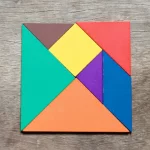Exploring the underwater world has never been easier! The vast ocean and its diverse ecosystem can be brought right into your classroom. How, you ask? Through the engaging and exciting world of DIY aquarium projects! These miniature aquatic habitats not only foster a deeper understanding of marine science but also provide a platform for hands-on learning. Plus, they can be a lot of fun to set up and maintain!
Why DIY Aquariums?
DIY aquariums help students visualize marine ecosystems, better comprehend the complex relationships that exist underwater, and nurture an appreciation for aquatic life. Through the process of creating and caring for these projects, they develop skills in problem-solving, critical thinking, creativity, and responsibility.
Choosing the Right Materials
An essential first step in this process is selecting suitable materials. Naturally, you’ll need a sturdy, transparent container to house your ecosystem. Glass tanks are a popular choice, but polycarbonate sheeting offers a more robust and safer alternative. This transparent thermoplastic maintains clarity over time, provides impact resistance, and is easier to handle – a perfect choice for a classroom setting.
Designing the Habitat
Now that you have your tank, it’s time to design your habitat. This is where creativity shines! An aquarium’s design should mimic the natural environment of the species it houses. Research different types of underwater landscapes – coral reefs, mangrove swamps, or tide pools. Do consider the needs of the organisms you intend to introduce. For example, some fish prefer hiding spots, so incorporate rocks and plants.
Picking Your Aquarium Inhabitants
Choose your aquarium inhabitants wisely. You want a harmonious mix of plants and animals that complement each other. To understand better, read this informative guide on aquarium inhabitants and their specific needs. It’s important to remember that balance is key; too many creatures can lead to a stressed environment and health problems.
Monitoring and Maintenance
Regular monitoring and maintenance are key to a thriving aquarium. Monitor the water temperature, pH levels, and general health of your tank inhabitants. Equip students with the knowledge and tools to carry out these checks. By doing this, you instill a sense of responsibility and emphasize the importance of regular scientific observation.
DIY Aquariums and the Curriculum
One might wonder, how do these projects fit into a standard curriculum? Simple. They perfectly dovetail into subjects like biology, chemistry, and even art. Aquariums offer practical examples of scientific concepts. For instance, the nitrogen cycle is no longer an abstract concept but a tangible process taking place in the tank. Or consider the color and form of aquatic plants and animals, an inspiration for art projects. Moreover, these DIY projects encourage group collaboration, a vital soft skill.
Conclusion
To conclude, DIY aquarium projects aren’t just a fun diversion. They’re an excellent teaching tool, instilling in students an appreciation for the wonders of marine science. Ready to embark on this underwater journey? Dive in with this step-by-step guide to setting up your first classroom aquarium. The adventure awaits!
Further Reading
For further reading on the subject, don’t miss this comprehensive handbook on the care of aquarium inhabitants. It covers all you need to know about the diverse aquatic life that could inhabit your classroom aquarium.


